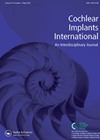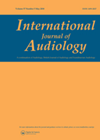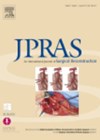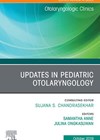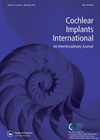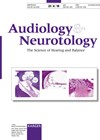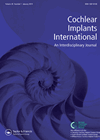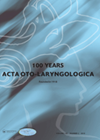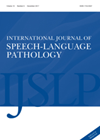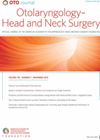
Journal Reviews
Which cross-over frequency is best for electro-acoustic stimulation?
Advances in technology and improved soft surgical techniques have led to individuals with better hearing thresholds, especially at the low frequencies, becoming candidates for cochlear implants (CI). Surgeons are more confident that residual hearing can be preserved thus making those...
Cochlear implants and speech perception
Cochlear implants can be an effective treatment for specific hearing losses. They may often be the only way to restore hearing for profoundly deaf people. Therefore, it is very important to understand all processes that may influence effective fitting of...
Facial palsy: What do patients and healthcare care about?
The article describes the process for establishing a collaborative research agenda to address gaps in understanding of the diagnosis, treatment management of facial palsy. A Delphi technique was used in order to establish a facial palsy research agenda. In round...
Understanding osseointegration for the otologist
Bone conduction implants are hearing devices that require osseointegration to create a stable and reliable interface between the hearing device and the skull to deliver sound to the cochlea. This article reviews the physiology of osseointegration, factors that may lead...
Auditory deprivation and single-sided deafness
In cases of bilateral auditory deprivation, there is clear evidence of an inverse relationship between performance after cochlear implantation and the length of severe to profound deafness prior to implantation (i.e. the longer the deprivation the poorer the outcome on...
Listening effort and speech perception performance
Capturing speech perception performance in noisy listening environments is a key part in validating any hearing instrument. Traditionally audiologists have always measured this performance in noisy environments by looking at thresholds, i.e. speech reception thresholds or signal to noise ratios....
Round window niche drilling with intratympanic for ISSHL. A new option for salvage?
This paper from China compares the technique of widening the round window via a posterior tympanotomy approach and steroid-soaked gelatin sponge with intratympanic steroids alone for salvage therapy in severe idiopathic sensorineural hearing loss. Salvage therapy was defined as patients...
Recurrent seroma in cochlear implanted patients
Little is known about why some patients experience recurrent seromas over the implant package and in the absence of any cause, antibiotics are frequently prescribed as a precaution to protect the implant from infection. A tertiary referral centre selected five...
Peer-support group for people with a hearing loss
Peer-support groups’ (PSGs) involvement in rehabilitation of people with different health issues can have a very positive impact on the patients’ wellbeing as showed in a various literature on the subject. This study involves analysis of data from previous studies...
Is there hope of hearing for postmeningitic patients deemed unsuitable for a cochlear implant?
Rehabilitation of patients with profound hearing loss deemed unsuitable for cochlear implants is challenging. An auditory brainstem implant (ABI) is a viable option for these patients. This paper evaluates auditory and speech perception outcome measures following ABI in 10 postmeningitic...
Does talking better make you feel better?
Interaction-focused therapy for people with language impairment (aphasia) following a stroke or brain injury is routinely used by speech and language therapists in clinical practice. These types of interventions are based on research into the organisation of interactions and interactional...
Oral versus oral and intratympanic corticosteroid treatment for sudden sensorineural hearing loss
The 2012 American Academy of Otolaryngology- Head and Neck Surgery Foundation (AAO-HNSF) clinical practice guidelines on sudden sensorineural hearing loss (SNHL) have two statements that address steroid use. Statement eight indicates an option to offer corticosteroid as initial treatment for...

